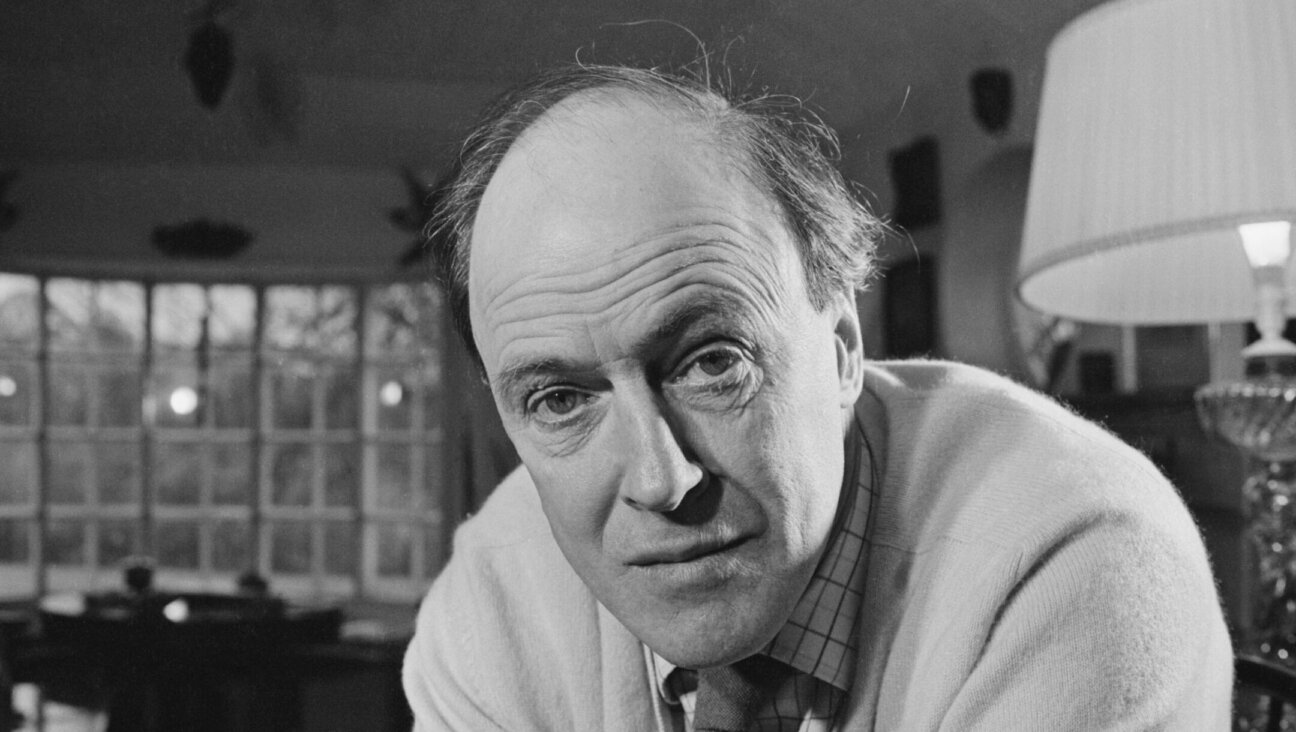Northern Commemoration

Displaced Loss: Milman traces the deaths of pioneer Canadian Jews in place of her family?s untraceable Eastern European ones. Image by DEBORAH BRASH
The Kaddish prayer is not only a thrice-daily means of memorializing a loved one, but also a literary framework that myriad writers have used for telling their stories of loss, from Leon Wieseltier’s dazzlingly vast “Kaddish” to Ari Goldman’s deeply moving and personal “Living a Year of Kaddish.”
In the case of Isa Milman’s “Prairie Kaddish,” however, no relative is being mourned, no immediate family member is lost. Rather, the volume, an eclectic mix of poetry, archival material, photographs and short recollections, is an homage to people the author never knew, who inhabited a little-known corner of Jewish history.
When Milman, a Canadian poet and visual artist, learned that Eastern European Jews settled as pioneers in the prairies of Saskatchewan in the early 1900s, she was shocked that she’d had no idea of their existence. Moved to know more, she decided to visit the Lipton Hebrew Cemetery in Saskatchewan, where the graves are ragged and scattered, “not a single tree/no tended lawns/not even a pebble/to mark a visit.”
In a departure from traditional Jewish burial practices, many of the graves are covered by small grave houses, which further piqued Milman’s interest in the various ways we memorialize the dead — in wood and stone and in words. Eventually, Milman undertook a pilgrimage through these towns and fields, mining the lives of these unlikely Jewish pioneers.
As if I heard a drum
struck by an invisible hand,
as if after thirty years in Canada
the grass sang me a welcome song.
As if those Jewish bones called me
meydele, said they’d waited for me so long,
as if they laid their hands on my eyes
to unblind me, and pulled me close to listen
The pioneer Jews she writes about were granted free land because, in the words of John A. Macdonald, the then prime minister of Canada, “A sprinkling of Jews in the North West would do much good. They would at once go in for peddling and politics….” But more than affording the opportunity to peddle and politic, this resettlement allowed the Jewish pioneers to escape the harsh persecutions of their native lands, which Milman’s poems powerfully evoke.
Among the most striking works in the book is “A Few Restrictions Regarding the Jews of Romania, 1885-1900”:
a restriction forbidding Jews to be peddlers
a restriction forbidding Jews to be shopkeepers
a restriction forbidding Jews to be craftsmen
The list also includes restrictions forbidding Jews from owning land or from working for a farmer, and the effect of seeing these punishing limitations laid out is surprisingly powerful. Amid the litany of persecution, Milman evokes the hopeful, wishful urge to set out for something new. In a poem titled “Promise,” which imagines a young woman on the way to this unknown land, she writes, “how vast this earth, how far a smallness, me, can go.” And in a poem titled “Baron and Baroness de Hirsch” (who helped finance the resettlement of these Jews), she writes
Maurice, at her bidding, devotes his millions
To the rescue of his people:
Creates schools, teaches farming,
Sends them to lands
of freedom.
Gives them tools.
Yet, any idealization of the pioneers’ endeavors is ironically undercut by a section called “Frequently Asked Questions,” and with these FAQs, the 21st century is slyly inserted into the 19th century. Included here is a township plan, as well as excerpts from a Yiddish pamphlet produced by the Jewish Colonization Association in 1912 and distributed to potential settlers. In reading this, there is the jolt of surprise at finding Yiddish in these parts — a poignant reminder of the ways in which Jews spread out into every region of North America. But even more compelling is Milman’s playfulness in contrasting the optimistic questions presumably asked by potential settlers with the harshness of the conditions they eventually encountered.
“How long is the winter season?” The straightforward answer appears on one page — “The snow starts around November and disappears around the beginning of April” — only to be undercut on the next page with a list of translations from Yiddish:
Ligners, ligners *liars, liars
*Shney in der sukkele *snow in the sukka
*Shney bis shvuos snow till Shavuot
A finstere kholem a nightmare
Layered onto Milman’s interest in these pioneer Jews is the writer’s own family background. Since Milman is the daughter of Holocaust survivors, the existence of these prairie graves stands in stark contrast to the fact that her family members’ graves remain unmarked and largely unknown. The personal aspect of her pilgrimage adds a richness to the volume, as though she were marking the fate of her compatriot Jews in place of her family’s own untraceable fate. And by intertwining the stories of Jews in ghettos and concentration camps with those of Jews on farms and prairies, she subtly reminds us that the Jews who settled in seemingly far-flung places are always intrinsically connected to the larger story of Jewish history.
Ultimately, the book’s greatest strength lies in the way it forges these and other connections: between life and death, between past and present, between the native people’s burial practices and the Jewish burial customs. Ironically, the only place where Milman’s artistry falters is in a section called “Bridges,” where her descriptions of the time spent compiling the volume make overly concrete some of the connections that are already so artfully drawn. But the book quickly regains its footing, and “Bridges” becomes little more than a detour on the way to the final poems for the men, women and children who died on the prairie and whose graves she visited.
She imagines Mendele, a boy whose grave house door bears a padlock. “Could you not bear to be cooped up for long?” Milman wonders, imagining a fidgety schoolboy in need of occasional excursions. “I want to know who remembers you with kaddish. Who comes with the padlock’s key?” And there is “Mrs. W Speaks From Her Suicide Grave House,” which evokes a woman whose decision to kill herself, Milman learned, was attributed to the fact that her husband was away for long periods of time: “They argued over what to do with me, planted me as if I were a plague, but honestly, what did I care?”
With the exception of the final poem, “Circle Back the Other Way: Square Dance Jamboree,” which clashes with the volume’s overall tone and unnecessarily attempts to draw together the various pieces of the book, these renderings powerfully imagine and memorialize those who remain largely unknown. Ultimately, this is a kaddish for the wounds of history and for the inability to ever fully record and transmit what came before us. Resounding throughout the book is the urge to uncover who these people were and what their lives were. Milman succeeds not only in providing some answers to these questions, but also in stirringly asking them anew.
Tova Mirvis is the author of “The Ladies Auxiliary” (W.W. Norton, 1999) and “The Outside World” (Alfred A. Knopf, 2004). Her third novel, “Inside Voices,” will be published next year.
The Forward is free to read, but it isn’t free to produce

I hope you appreciated this article. Before you go, I’d like to ask you to please support the Forward.
At a time when other newsrooms are closing or cutting back, the Forward has removed its paywall and invested additional resources to report on the ground from Israel and around the U.S. on the impact of the war, rising antisemitism and polarized discourse.
Readers like you make it all possible. We’ve started our Passover Fundraising Drive, and we need 1,800 readers like you to step up to support the Forward by April 21. Members of the Forward board are even matching the first 1,000 gifts, up to $70,000.
This is a great time to support independent Jewish journalism, because every dollar goes twice as far.
— Rachel Fishman Feddersen, Publisher and CEO
2X match on all Passover gifts!
Most Popular
- 1

Fast Forward The NCAA men’s Final Four has 3 Jewish coaches
- 2

Fast Forward Cory Booker proclaims, ‘Hineni’ — I am here — 19 hours into anti-Trump Senate speech
- 3

Opinion Trump’s Israel tariffs are a BDS dream come true — can Netanyahu make him rethink them?
- 4

Fast Forward Cory Booker’s rabbi has notes on Booker’s 25-hour speech
In Case You Missed It
-

Fast Forward Trump says US has begun direct talks with Iran over its nuclear program
-

Fast Forward In new letter, Mahmoud Khalil downplays campus antisemitism and accuses some students of ‘participating in the genocide’
-

Fast Forward Play about Roald Dahl’s antisemitism wins 3 Olivier Awards
-

Opinion A legacy of defiance: Why I’m holding my Seder in one of the oldest Black churches in the country
-
Shop the Forward Store
100% of profits support our journalism
Republish This Story
Please read before republishing
We’re happy to make this story available to republish for free, unless it originated with JTA, Haaretz or another publication (as indicated on the article) and as long as you follow our guidelines.
You must comply with the following:
- Credit the Forward
- Retain our pixel
- Preserve our canonical link in Google search
- Add a noindex tag in Google search
See our full guidelines for more information, and this guide for detail about canonical URLs.
To republish, copy the HTML by clicking on the yellow button to the right; it includes our tracking pixel, all paragraph styles and hyperlinks, the author byline and credit to the Forward. It does not include images; to avoid copyright violations, you must add them manually, following our guidelines. Please email us at [email protected], subject line “republish,” with any questions or to let us know what stories you’re picking up.
















